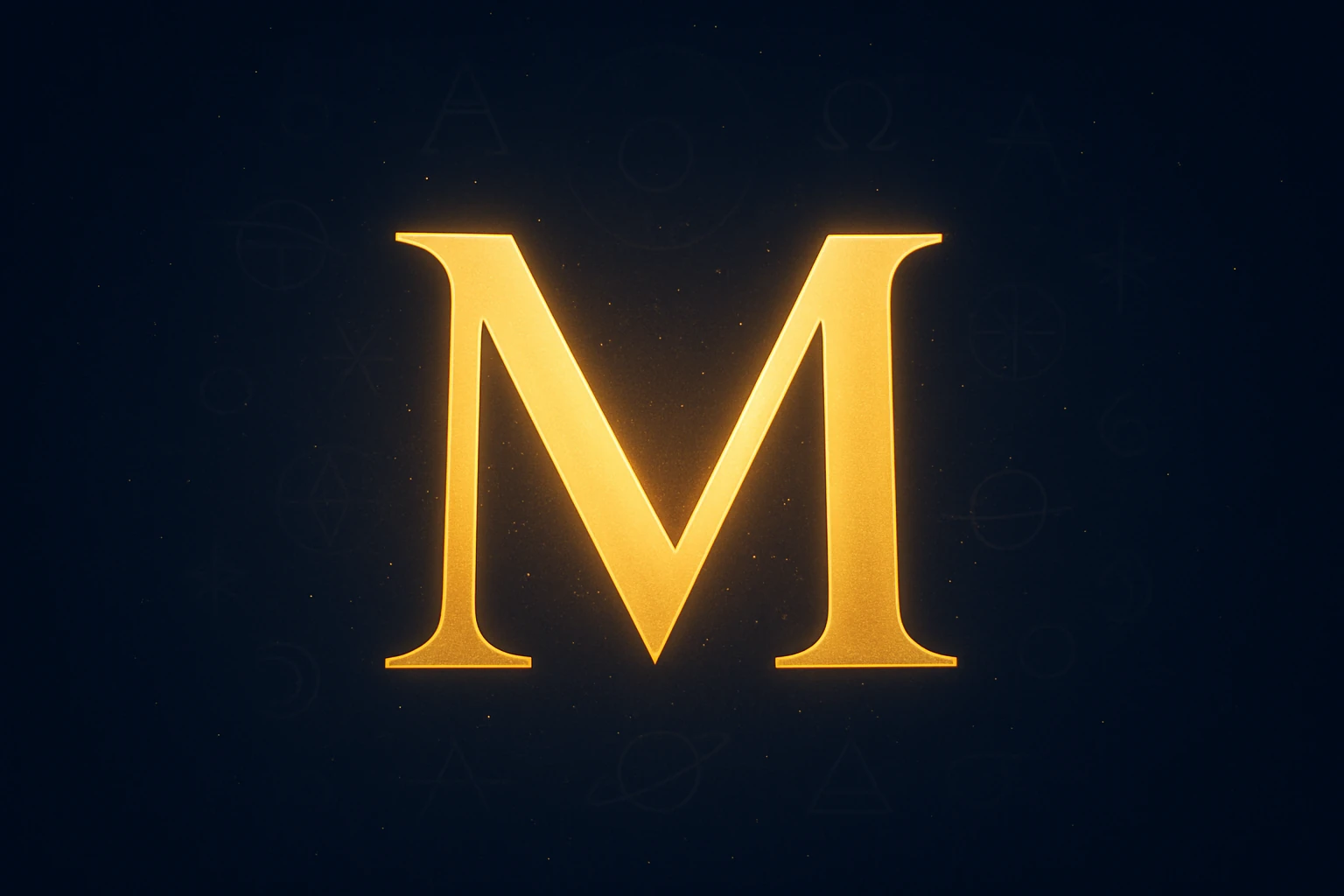The letter M sits comfortably in the middle of our alphabet, neither first nor last, yet commanding a presence that few other letters achieve. There’s something about letter M that feels foundational and essential. It stands tall with its symmetrical peaks, creating a visual rhythm that catches the eye. When we pronounce it, our lips press together in one of the first sounds many babies make. This centrality isn’t just alphabetical – it’s woven into our everyday experience.
Ancient Mountains and Waves: The Birth of M

(AI Generated)
The story of letter M begins thousands of years ago, etched into stone and painted on ancient surfaces. Its earliest ancestor wasn’t about mountains at all, but water. In Proto-Sinaitic script, the precursor looked like wavy lines representing water, called “mem.” Phoenicians simplified these waves while keeping their essence. The Greeks adopted it as “mu,” rotating and straightening the character. By the time Romans developed Latin script, our familiar letter M had taken shape.
These transformations weren’t random. Each culture preserved something vital about M – its flowing nature, its strong presence, and its ability to bridge concepts. Ancient scribes recognized that certain shapes resonated with human perception. M’s peaks and valleys mirrored the natural world, making it instantly recognizable and meaningful across diverse civilizations.
The Visual Power of Symmetry in M
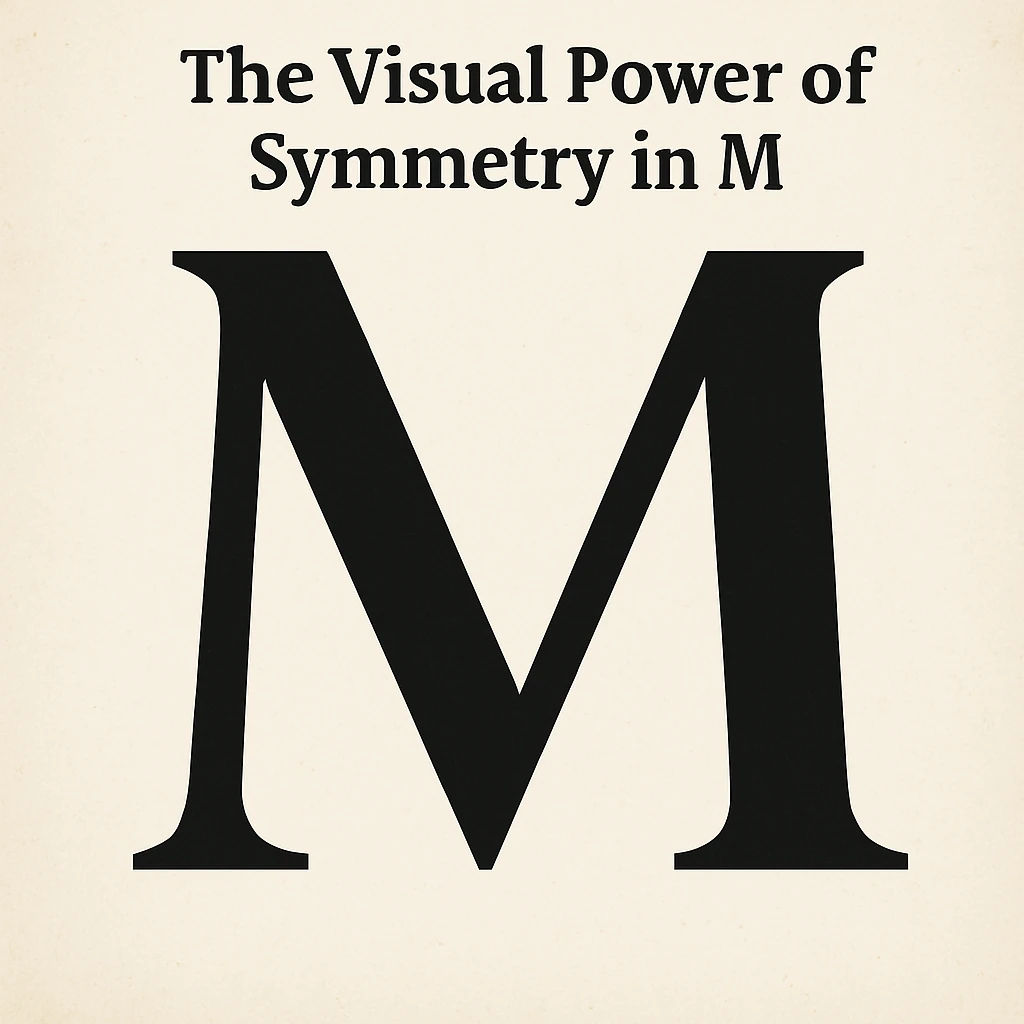
(AI Generated)
Look closely at a capital M. Notice its perfect balance – two outer strokes standing like pillars, connected by inner diagonals that meet in the middle. This symmetry isn’t just pleasing to the eye; it creates visual tension and movement. Designers know that letter M provides stable yet dynamic energy in logos and typography. Its proportions follow natural ratios that our brains find satisfying.
The letter carries weight and momentum. Unlike rounded letters like O or C, M plants itself firmly on the baseline. Its footprint is substantial, commanding space in any world it appears in. Yet despite this solidity, M maintains a sense of forward motion through its connected diagonals. This duality makes letter M particularly valuable in visual communication – it simultaneously suggests reliability and progress.
M is for Mother: A Global Linguistic Anchor
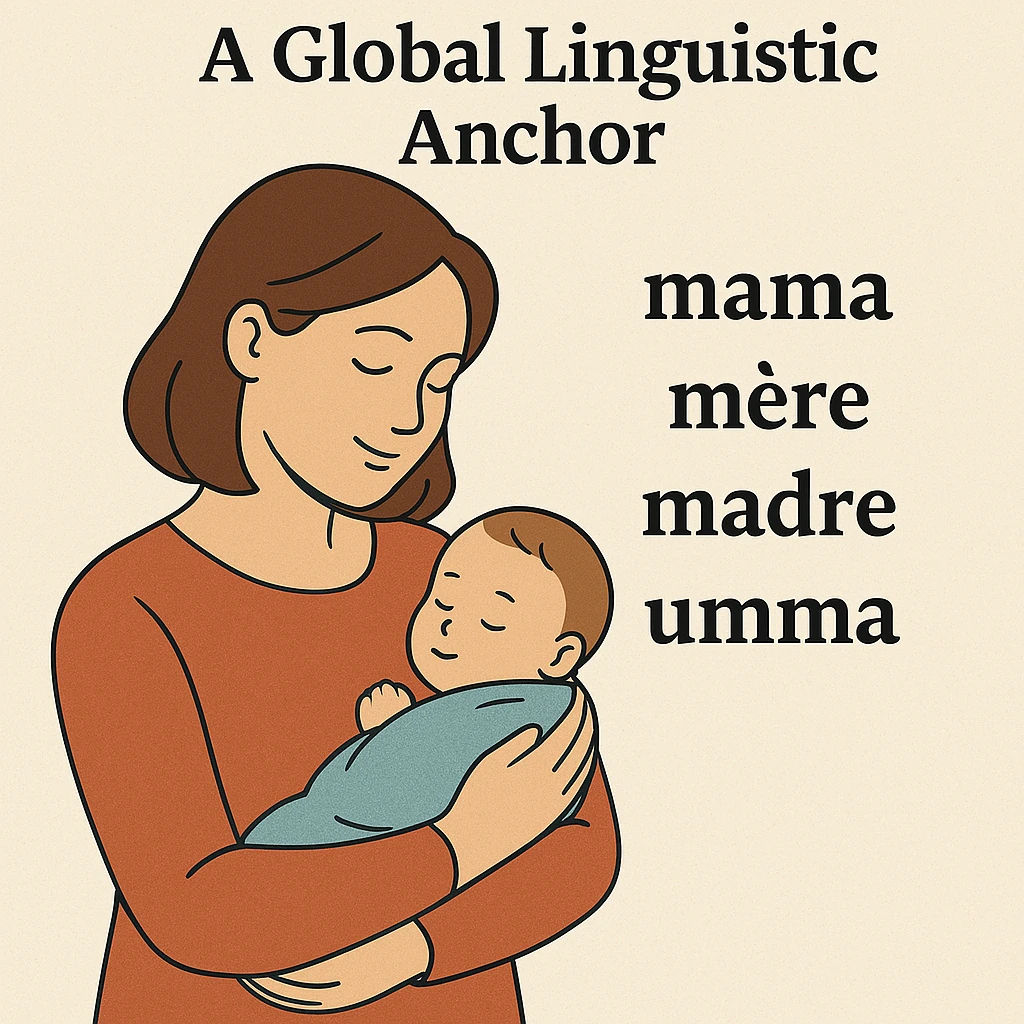
(AI Generated)
Perhaps the most fascinating aspect of M is its nearly universal connection to motherhood. Across vastly different language families – from Indo-European “mother” to Arabic “umm,” Chinese “māma” to Swahili “mama” – the m-sound anchors words for mother. This remarkable consistency points to something deeper than coincidence.
Linguists theorize that babies naturally form “ma” sounds when opening and closing their mouths during nursing or crying. These become some of the first recognizable utterances infants produce. Mothers respond, reinforcing the sound as meaningful communication. Over generations, this biological pattern shaped language development worldwide. The bilabial nature of letter M – formed by pressing the lips together – creates one of the easiest and earliest consonants humans can articulate.
From Mu to Mmm: A Sound of Comfort and Depth

(AI Generated)
When we express satisfaction over a delicious meal, we often murmur “mmm.” This isn’t arbitrary. The M sound exists as a voiced bilabial nasal in phonetics because air passes through the nose while the lips stay together, which produces resonance in the nasal cavity. The physical experience links to the emotions of being completely full and content.
The sound carries emotional weight across contexts. It feels intimate, partly because it requires no opening of the mouth – a closed-lip hum that keeps thoughts inside rather than projecting them outward. The words “murmur,” “mumble,” and “mutter” all describe quiet private speech. Letter M introduces countless words related to inner experience: mind, memory, meditation, and meaning. Its sound quality conveys depth rather than sharpness.
Double Trouble: Why Letter M Is Often Doubled in Spelling

(AI Generated)
Have you noticed how frequently M appears as a double letter? Words like “summer,” “common,” “communication,” and “hammock” feature this pattern. This doubling serves important phonological purposes. In many cases, it signals that the preceding vowel should be pronounced short rather than long – compare “taming” (long a) with “tamming” (short a). Double consonants generally indicate syllable boundaries and stress patterns.
M seems particularly prone to this doubling across many Indo-European languages. In Italian, double letter m is especially common – think “mamma” or “fiammifero.” This doubling creates a slight pause or emphasis that gives letter M words a distinctive rhythm. When speaking, we naturally extend the m-sound slightly in these contexts, giving these words more weight and presence in our speech.
The M of Motion: Fast Words and Fluid Concepts

(AI Generated)
M introduces many words related to movement and energy: move, momentum, motor, mobile, and migration. This connection isn’t random. The dynamic quality of the letter’s shape – particularly in lowercase letter m with its rolling humps – visually suggests wavelike movement. The sound itself requires muscular action, as lips press together and release, mimicking the concept of contained energy being directed.
We find letter M prominently featured in words about power and magnitude: mighty, massive, mammoth, maximum. The letter appears disproportionately in vocabulary describing force and impact. Even metaphorical motion falls under M’s domain – motivation, meaning, and mental all describe internal movements rather than physical ones. This connection between the letter and concepts of energy persists across semantic categories.
The Magic of M in Branding and Pop Culture
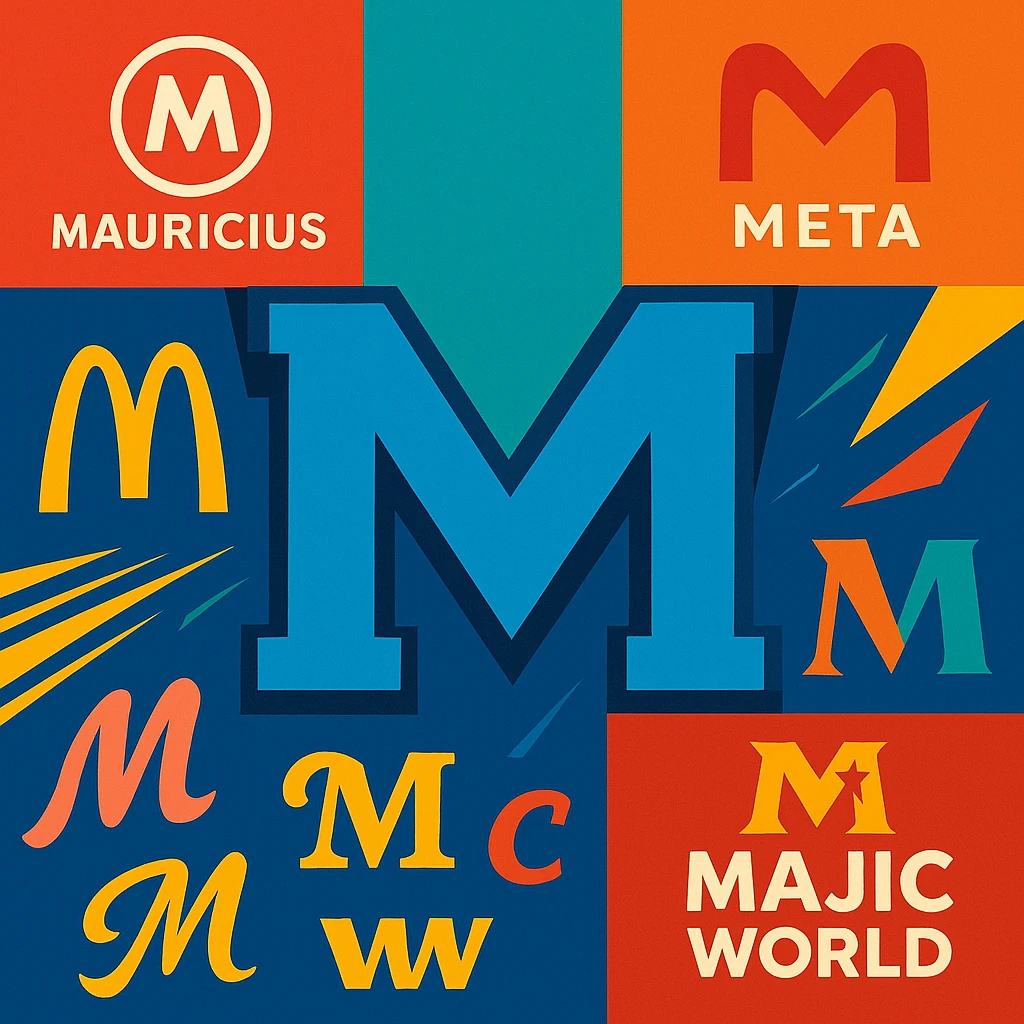
(AI Generated)
Marketing executives understand M’s magnetic pull. The golden arches of McDonald’s, the sleek simplicity of the Meta logo, and the dynamic shield of Marvel – all harness the visual power of M. These aren’t coincidental choices. Letter M logos tend to be memorable, partly due to the letter’s symmetry and partly because of its strong vertical elements that convey stability and trust.
Music industry giants like Madonna, Metallica, and Mariah Carey built brands around M-initiated names. Movie monsters from Mothra to Maleficent capitalize on M’s slight menace when paired with darker concepts. The letter straddles boundaries – it can feel friendly (Mickey Mouse) or formidable (Magneto) depending on context. This versatility makes M particularly valuable in cultural production, where it adapts to diverse moods and messages.
M Is for Myth: Its Role in Legends and Lore
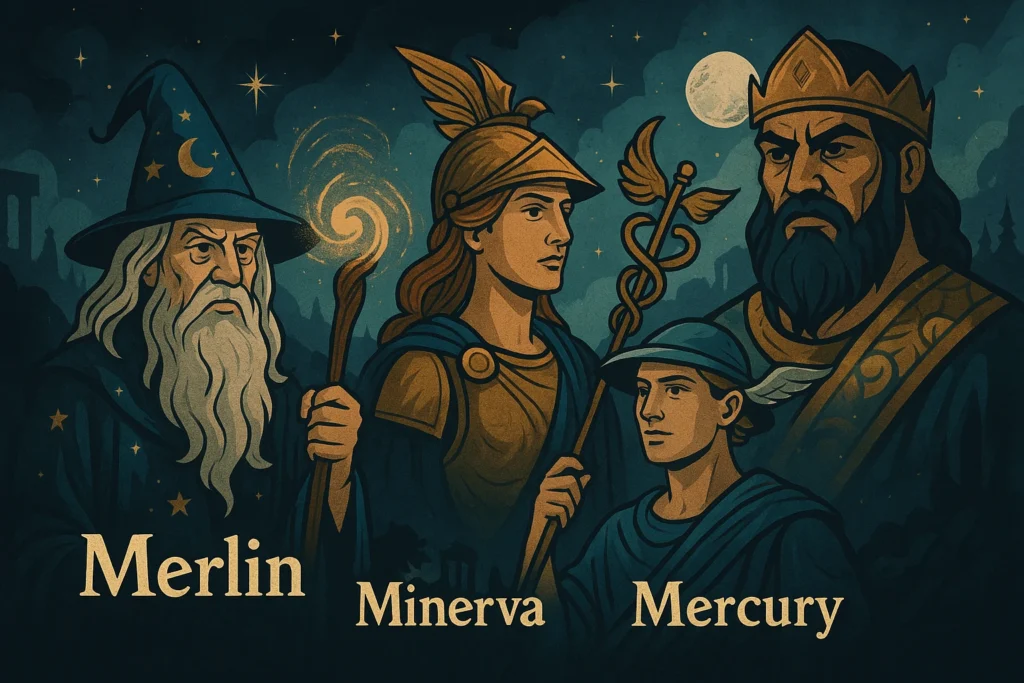
(AI Generated)
Across mythologies, letter M initiates names of power. Minerva functions as the goddess of wisdom, while Merlin serves as the original wizard. Mercury acts as a divine messenger, and Marduk serves as the Babylonian creator deity. This pattern continues in modern mythology – from Middle-earth to the Marvel universe. The letter introduces beings and places of transformation and mystery: metamorphosis, magic, miracles, monsters.
Ancient cultures often associated M with water and cycles – likely due to its early pictographic origins representing waves. Moon goddesses frequently have M-names: Mani (Norse), Máni (Norse), and Mawu (African). The connection between M, water, and cyclical time appears across disparate traditions. The letter seems to have maintained its primordial associations with fluidity and change despite evolving through different writing systems.
M in Music: Notes, Movements, and Meaning
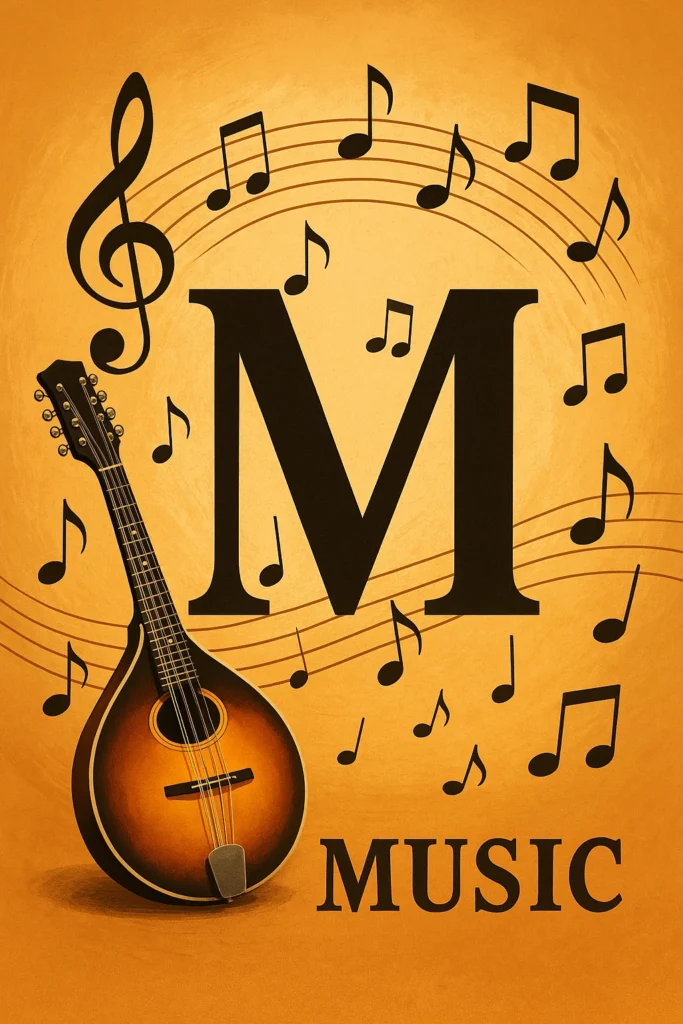
(AI Generated)
Music terminology embraces M extensively: melody, measure, meter, modulation, minor, major. These terms govern fundamental aspects of musical structure and expression. The letter introduces many instrumental names: mandolin, marimba, maraca, and mellotron. Even the word “music” itself begins with the Greek “μ” (mu).
The phonetics of letter M allow for sustained humming – the foundation of musical expression before formal systems developed. Many cultures use m-sounds in meditative chanting because the closed-mouth resonance creates vibrations felt physically in the body. Modern music continues this tradition: melodic, memorable, and moving – all qualities that musicians strive for. The letter’s connections to both mathematical structure and emotional expression mirror music’s dual nature as both science and art.
M and Masculinity: A Cultural Association
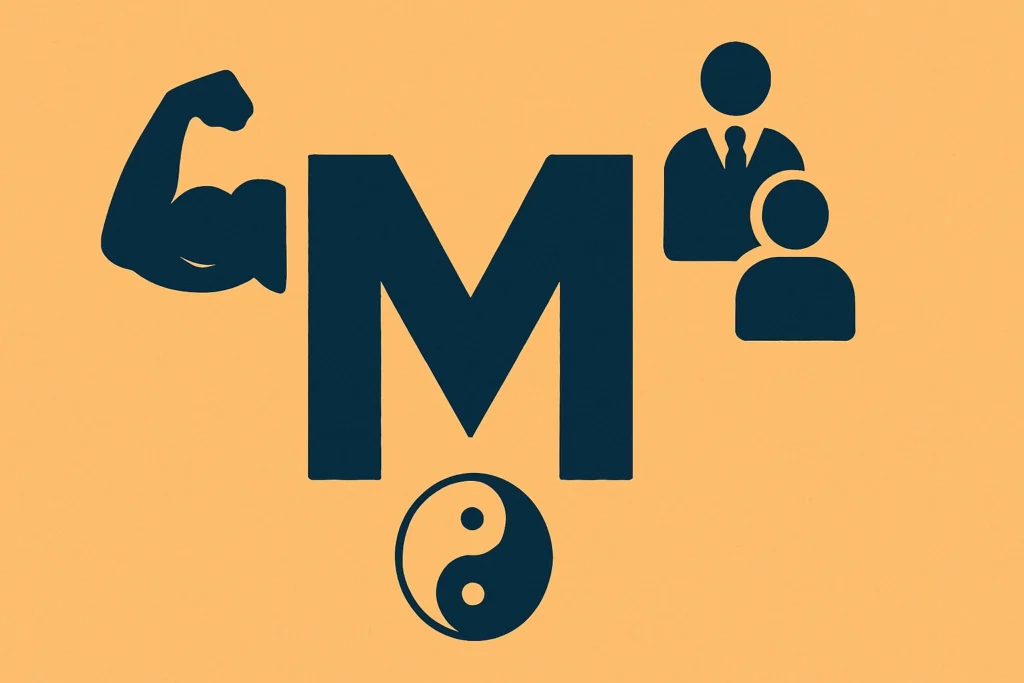
(AI Generated)
Languages and cultures often link M with masculine concepts: man, male, master, mister. This association extends to traits traditionally valued in men: might, muscle, mastery. Marketing frequently exploits this connection – products targeting men often feature prominent M-branding (think Monster energy drinks or Marlboro cigarettes).
Yet interestingly, M simultaneously connects to motherhood and nurturing qualities typically coded as feminine. This duality suggests the letter transcends simple gender binaries, perhaps representing a more integrated human wholeness. Modern masculine ideals increasingly recognize this balance – mentorship over mere mastery, mindfulness alongside muscle. The letter’s visual strength paired with its associations with nurturing reflects an evolving understanding of gender expression.
The Silent Letter M? Rare and Strange Linguistic Appearances
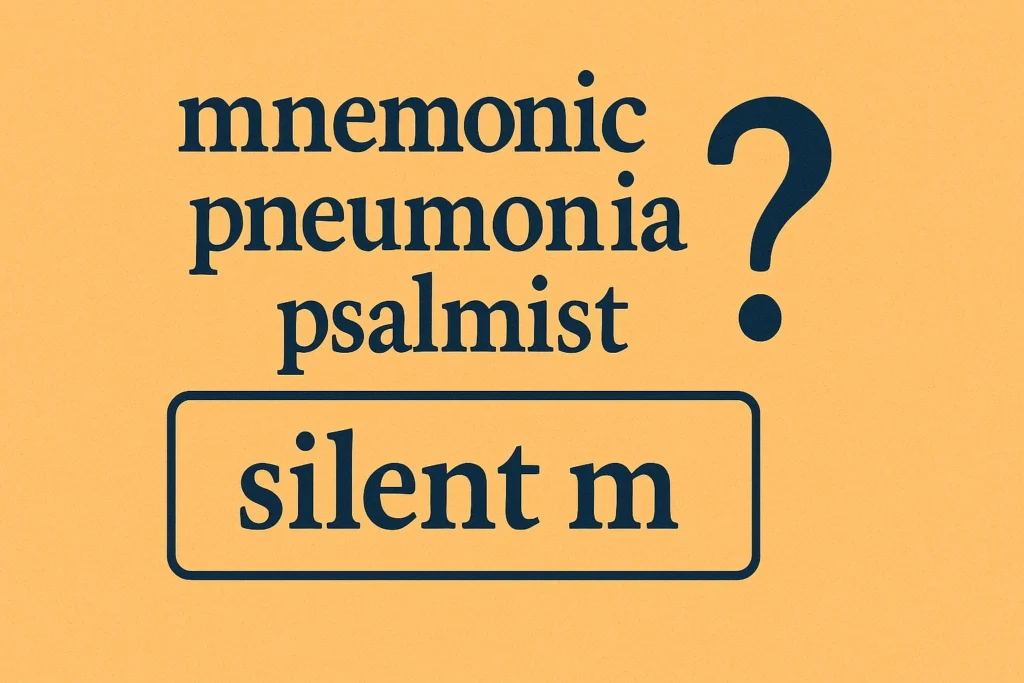
(AI Generated)
English contains several words with silent or nearly silent Ms, most borrowed from Greek: mnemonic, pneumonia, psalmist. These unusual spellings preserve etymological history rather than phonetic accuracy. The silent letter M often indicates a Greek origin where the initial sound was pronounced but gradually silenced as words traveled between languages.
Other languages use M in ways English speakers might find surprising. In Portuguese, the final letter M nasalizes the preceding vowel rather than being pronounced as a distinct consonant. French combines M with other letters to create nasal vowel sounds. These variations show how versatile the letter is across linguistic environments – sometimes visible but unheard, sometimes melded into neighboring sounds, creating rich phonetic textures beyond its basic sound.
How Children Meet the Letter M
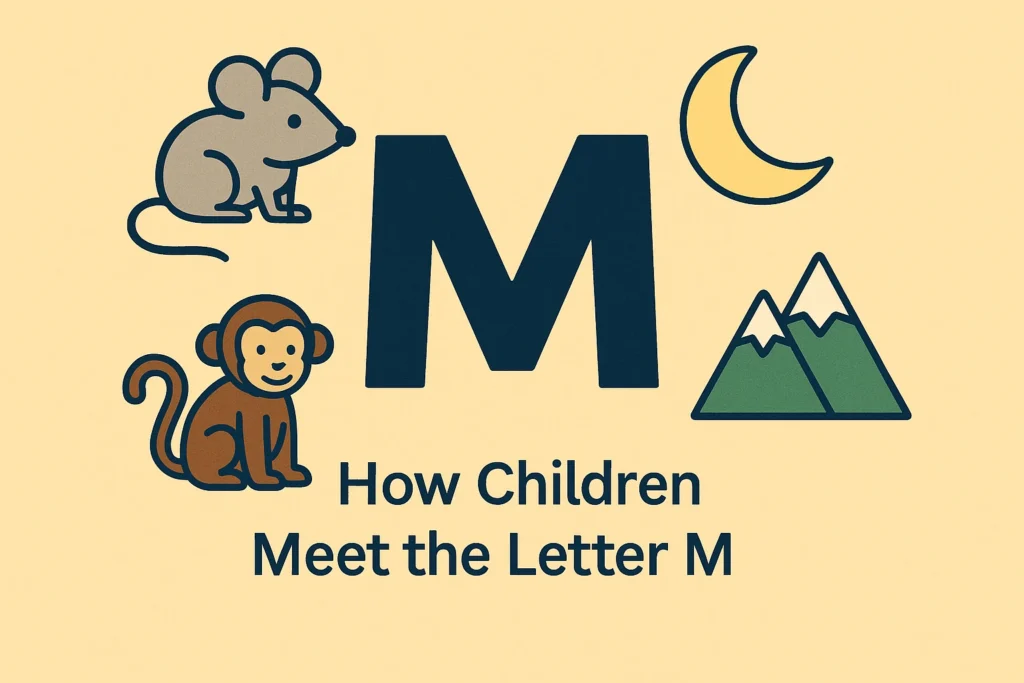
(AI Generated)
Early education often introduces M as one of the first consonants children learn to write and recognize. Its straightforward formation – “down, up, down, up” – provides a manageable challenge after simpler letters like O or I. Children’s literature embraces M-words with concrete, recognizable referents: monkey, moon, mountain, mouse. These familiar concepts help young learners connect abstract symbols with their lived experiences.
The physical act of forming the letter M develops fine motor control. Teachers observe that children who master M’s parallel lines often demonstrate readiness for more complex letter formations. Many educational systems use the letter as a benchmark for assessing handwriting development. M’s prominence in sight words like “me,” “my,” and “am” further centralizes it in early reading experiences, making it a foundational element in literacy acquisition.
The M-Effect: How Writers and Poets Use It
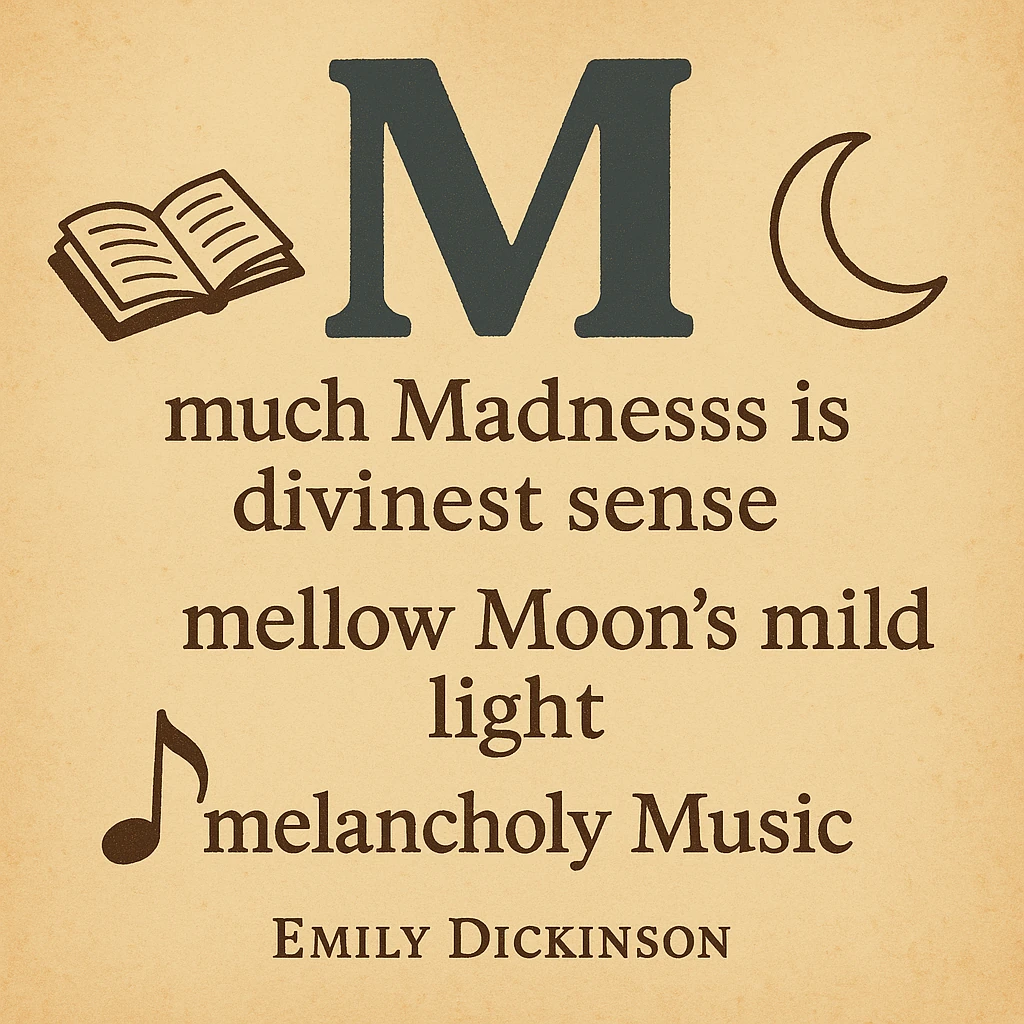
(AI Generated)
Literary masters have long recognized M’s musicality. Alliteration using the letter M creates smooth, flowing phrases: “much madness is divinest sense” (Emily Dickinson) or “mellow moon’s mild light” (Lord Byron). The sound lends itself to immersive description and mood-setting. Unlike harsh consonants like K or X, M can repeat without creating dissonance, allowing for melodic runs of related sounds.
Poets particularly value letter M for its versatility. It can suggest softness (“murmur,” “mist”) or monumentality (“mountain,” “mammoth”). The letter pairs effectively with different vowel sounds to create varied emotional effects. In free verse, lines heavy with M-sounds often create contemplative pacing. Shakespearean characters with M-names frequently possess complexity and depth: Macbeth, Miranda, and Mercutio. Contemporary writers continue leveraging these properties, using letter M to modulate tone and texture in their work.
Symbolic M: From Mathematics to Medicine
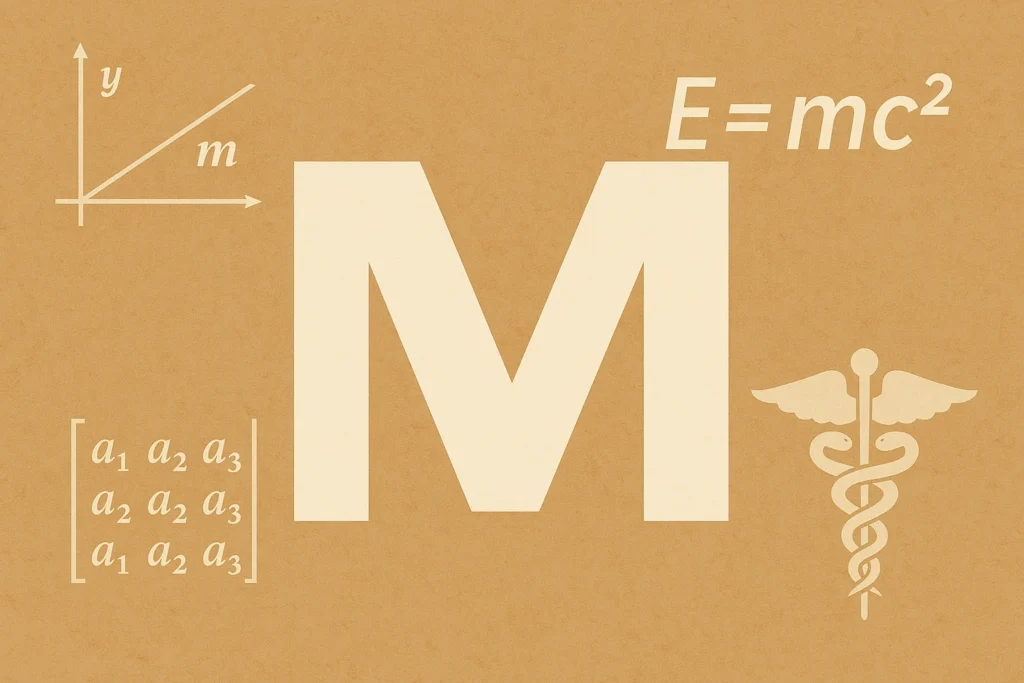
(AI Generated)
Beyond language, M serves as an important symbol across disciplines. In mathematics, it often represents matrices or slopes. Physics uses M for mass and momentum – concepts fundamental to understanding how our universe operates. Medicine employs M in numerous abbreviations and classification systems, from malignant to myocardial. The metric system designates mega (million) with a capital M.
These technical applications aren’t arbitrary. M’s position mid-alphabet makes it available when earlier letters have been assigned. Its distinctive shape reduces confusion with other symbols. M’s association with magnitude makes it appropriate for measurements and quantities. Across scientific fields, the letter maintains connections to its historical meanings of measurement, motion, and materiality, creating intuitive symbolism that aids understanding and memory.
Countries That Begin with M: A Global Snapshot
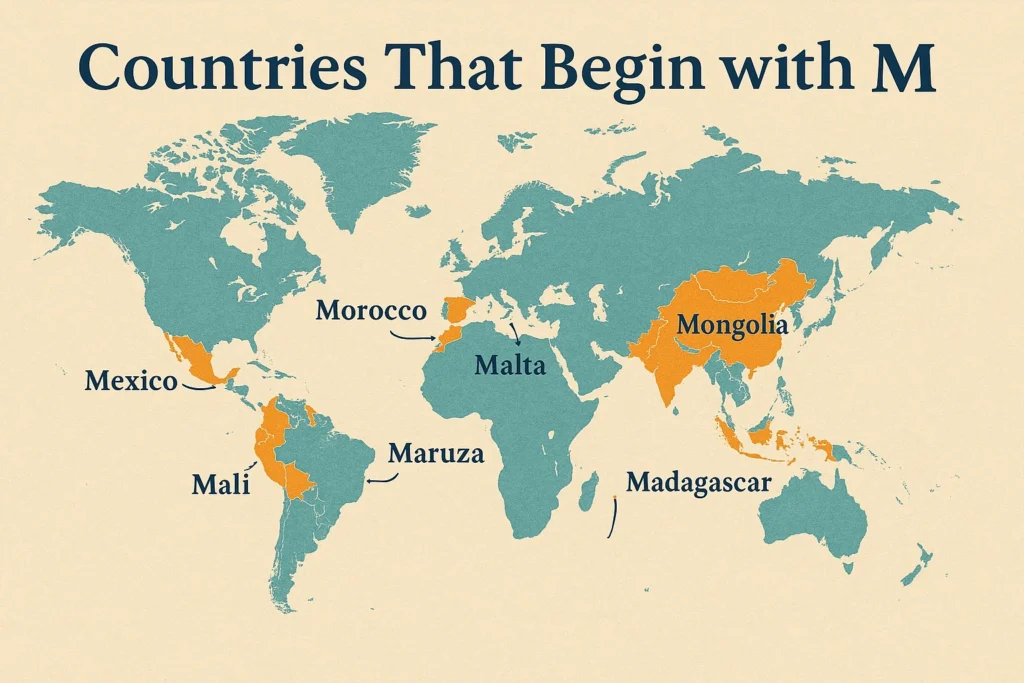
(AI Generated)
Seventeen nations currently begin with M, spanning diverse continents, cultures, and histories. From tiny Malta to massive Mexico, these countries represent a remarkable variety. Yet patterns emerge: many gained independence or current names during 20th-century decolonization (Malawi, Malaysia, Mozambique). Several feature significant mountains (Montenegro literally means “black mountain”) or coastlines (Maldives, Mauritius), echoing M’s ancient associations with peaks and water.
Madagascar stands as the only country name where the letter M appears three times. Mongolia preserves one of history’s oldest continuing cultural identities. Morocco claims the westernmost point in mainland Africa. Each M-nation contributes distinctive elements to global heritage – from Mali’s ancient manuscripts to Malaysia’s towering Petronas Towers. Their distribution across continents demonstrates M’s universality in naming traditions worldwide.
Diacritical Cousins: Variations of Letter M Around the World
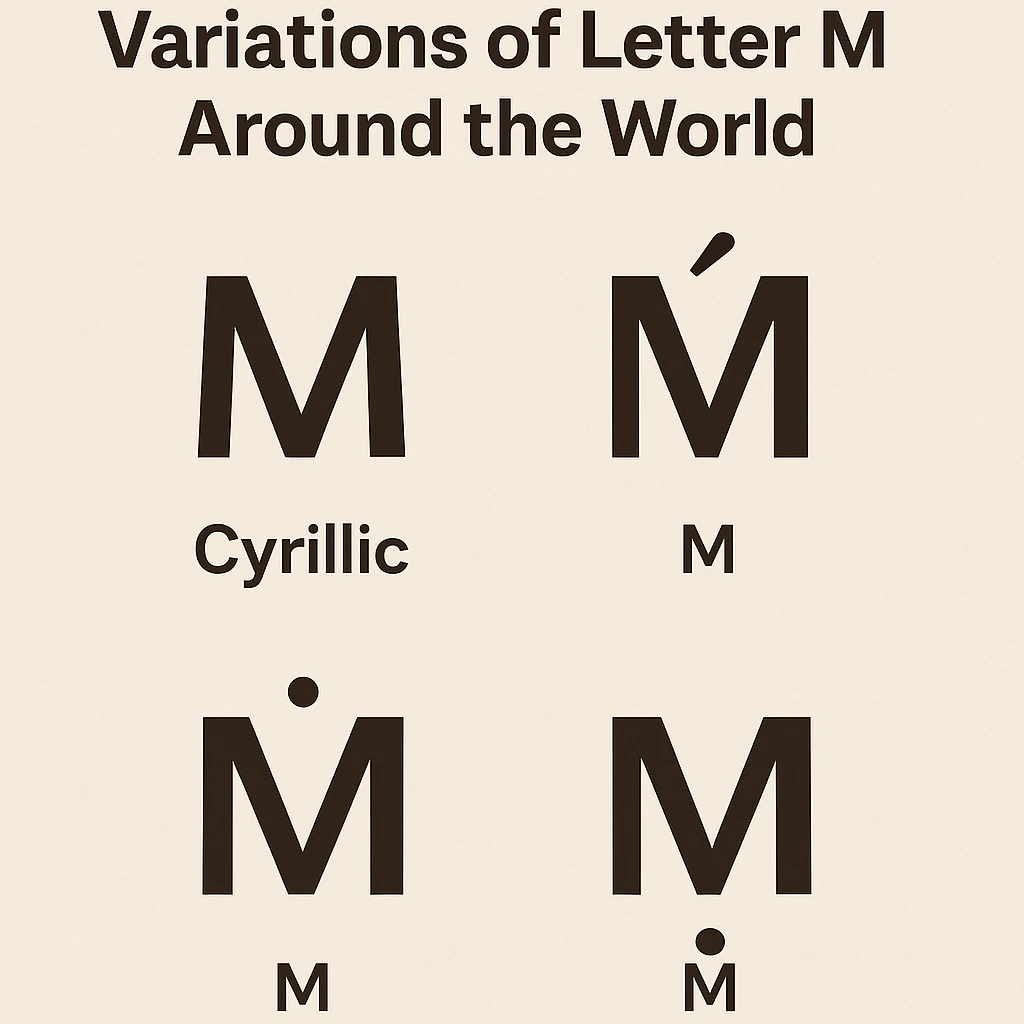
(AI Generated)
Beyond standard Latin M, many variations exist across writing systems. Cyrillic uses М, identical in appearance but representing a different linguistic tradition. The International Phonetic Alphabet symbol ɱ shows the labiodental nasal sound, which occurs in “comfort,” while the letter M takes some features from F’s position of articulation. The letter M appears with different diacritical marks in various languages, including Ḿ (acute accent), Ṁ (dot above), and letter Ṃ (dot below).
These variations serve specific phonetic needs within their respective languages. Vietnamese use the letter Ḿ to indicate a rising tone with the m-sound. Medieval manuscripts featured elaborately decorated M-initials, sometimes incorporating mythological figures or nature motifs within the letter’s structure. These diverse forms show how a basic shape evolves to meet different cultural and linguistic requirements while maintaining recognizable connections to its original form.
Words That Begin With Letter M
M moves with meaning — from memory to mastery. These M-words carry both emotion and momentum:
- Marketing – The craft of making your message matter. Start here
- Mindset – The internal compass guiding effort and resilience. Growth mindset
- Momentum – The invisible force that builds progress over time. Momentum in behavior
Final Thoughts: The Lasting Majesty of M
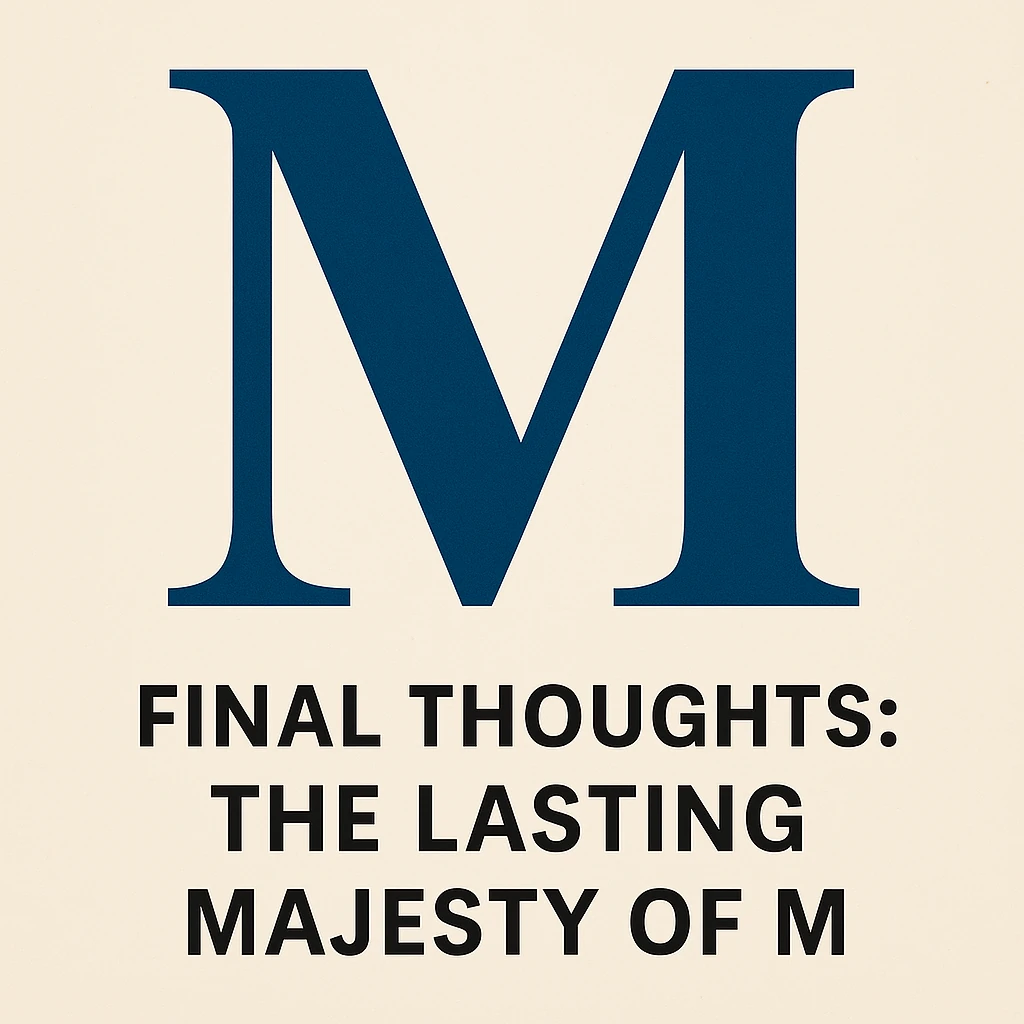
(AI Generated)
As we’ve explored, letter M contains multitudes – from its ancient origins depicting water to its modern applications in science and technology. Its dual nature embraces opposites: masculine and maternal, mighty and musical, material and metaphysical. Few symbols in human communication maintain such versatility while remaining instantly recognizable across cultures and eras.
The letter’s physical formation – lips coming together – mirrors how it brings concepts together in our thinking. Its sound resonates both literally and figuratively, creating connections between words and ideas that might otherwise remain separate. Perhaps this explains M’s staying power and prominence. In a world of constant change, letter M provides a stable yet flexible foundation for expressing human experience across boundaries of time, culture, and discipline.
Continue Your Alphabet Journey
Explore More Letters:
A | B | C | D | E | F | G | H | I | J | K | L | M | N | O | P | Q | R | S | T | U | V | W | X | Y | Z
Share this article:
Did you enjoy learning about the letter M? Share your thoughts in the comments below or spread the knowledge by sharing this article with fellow language enthusiasts!
